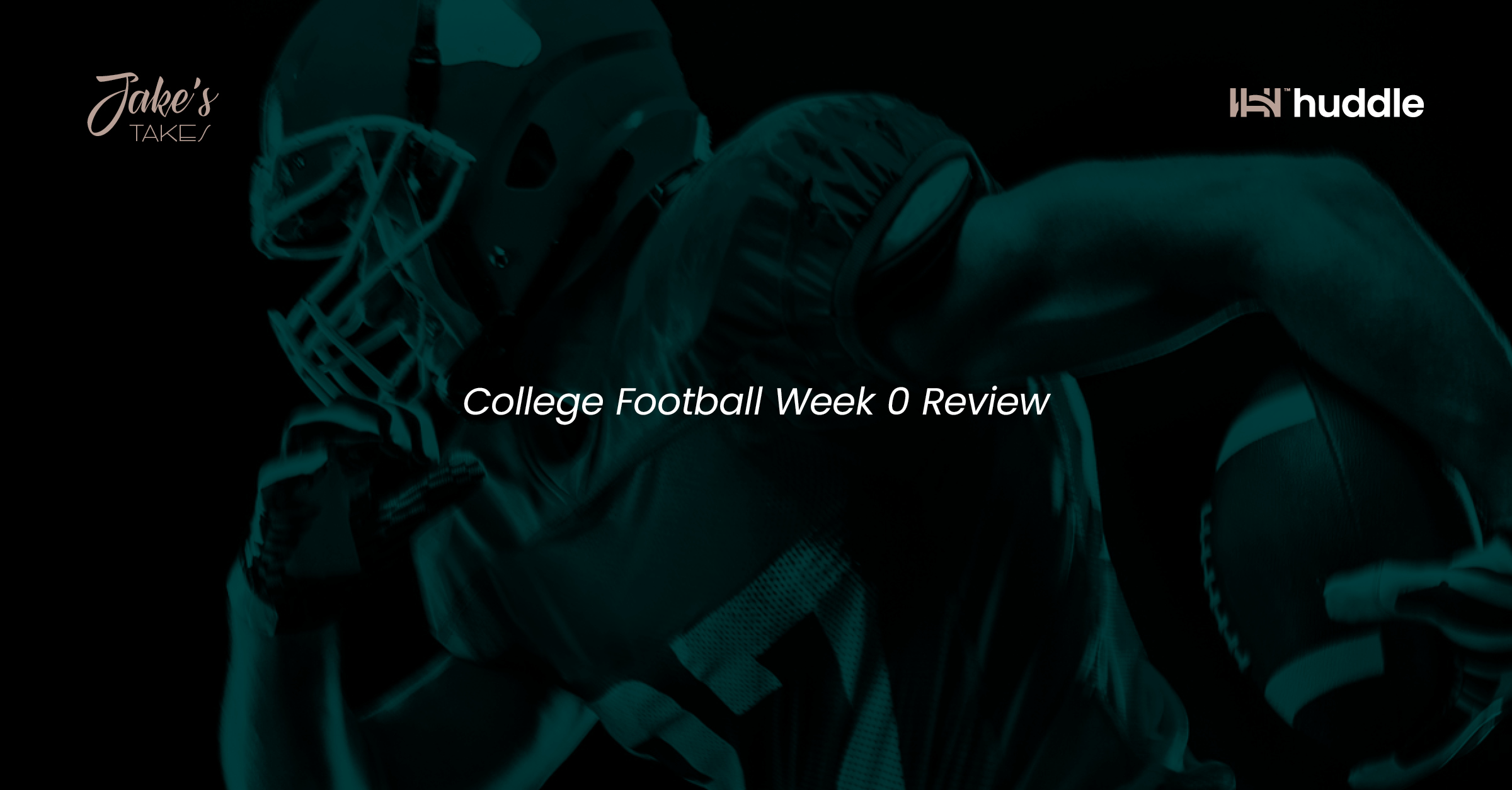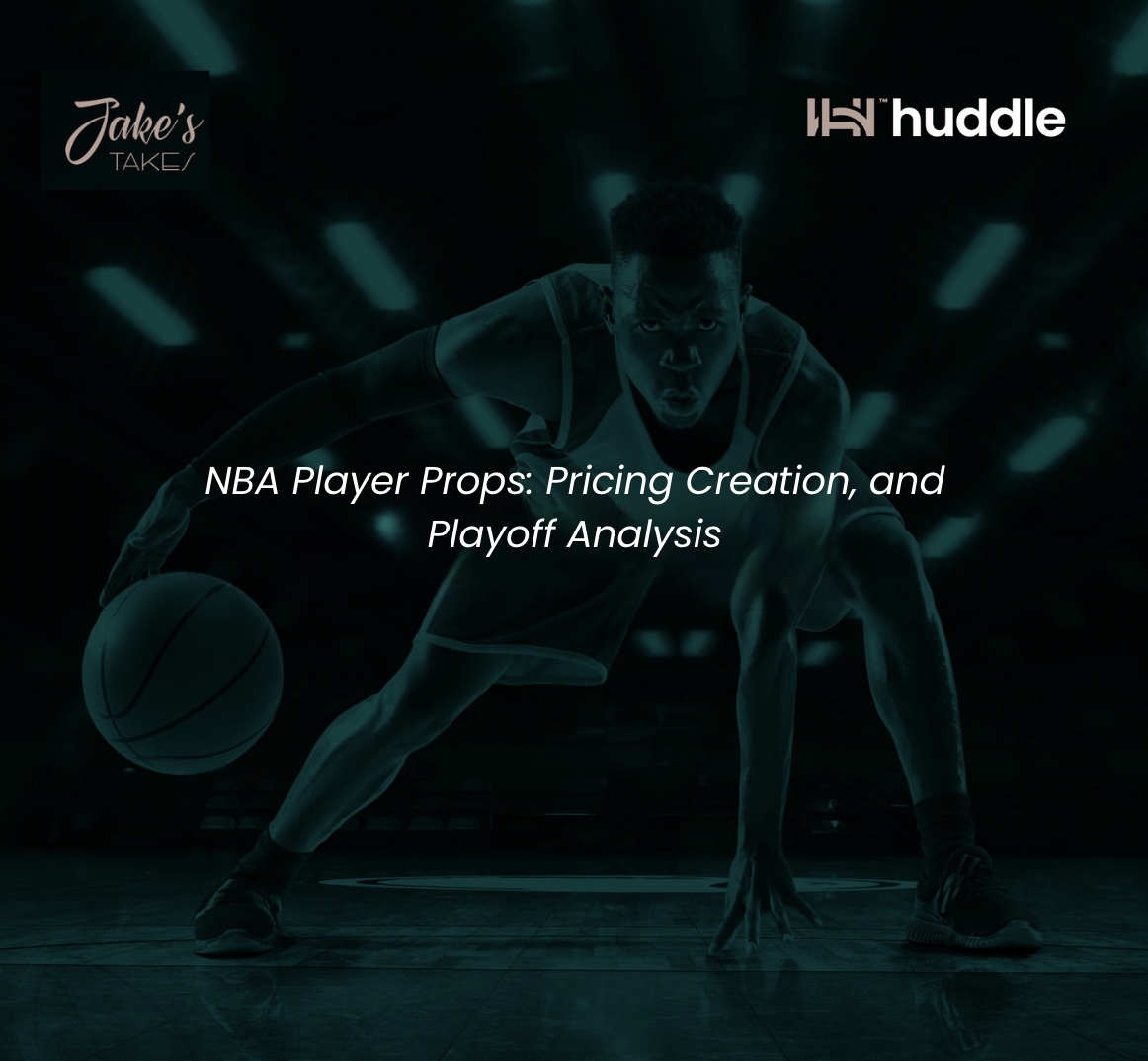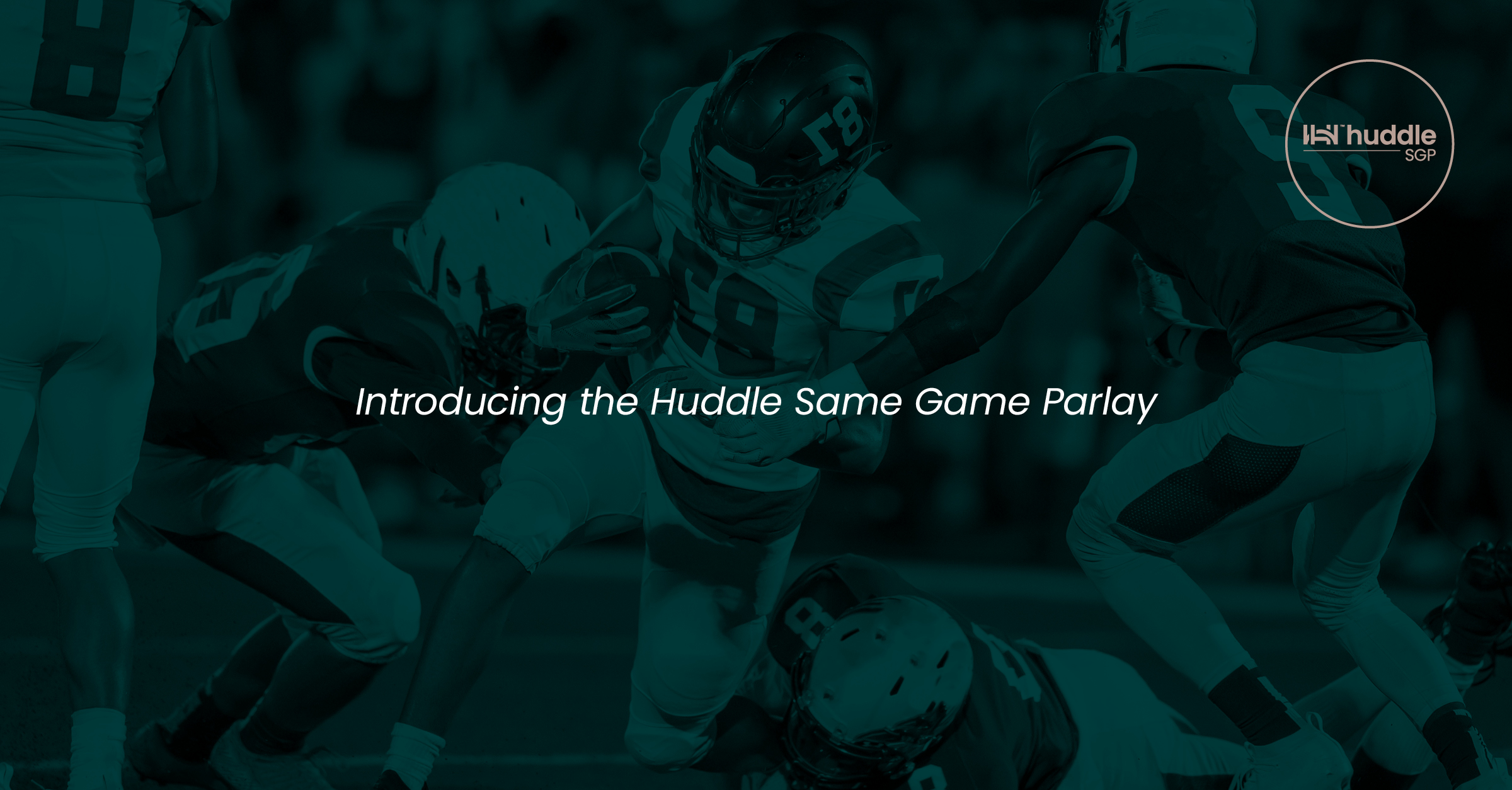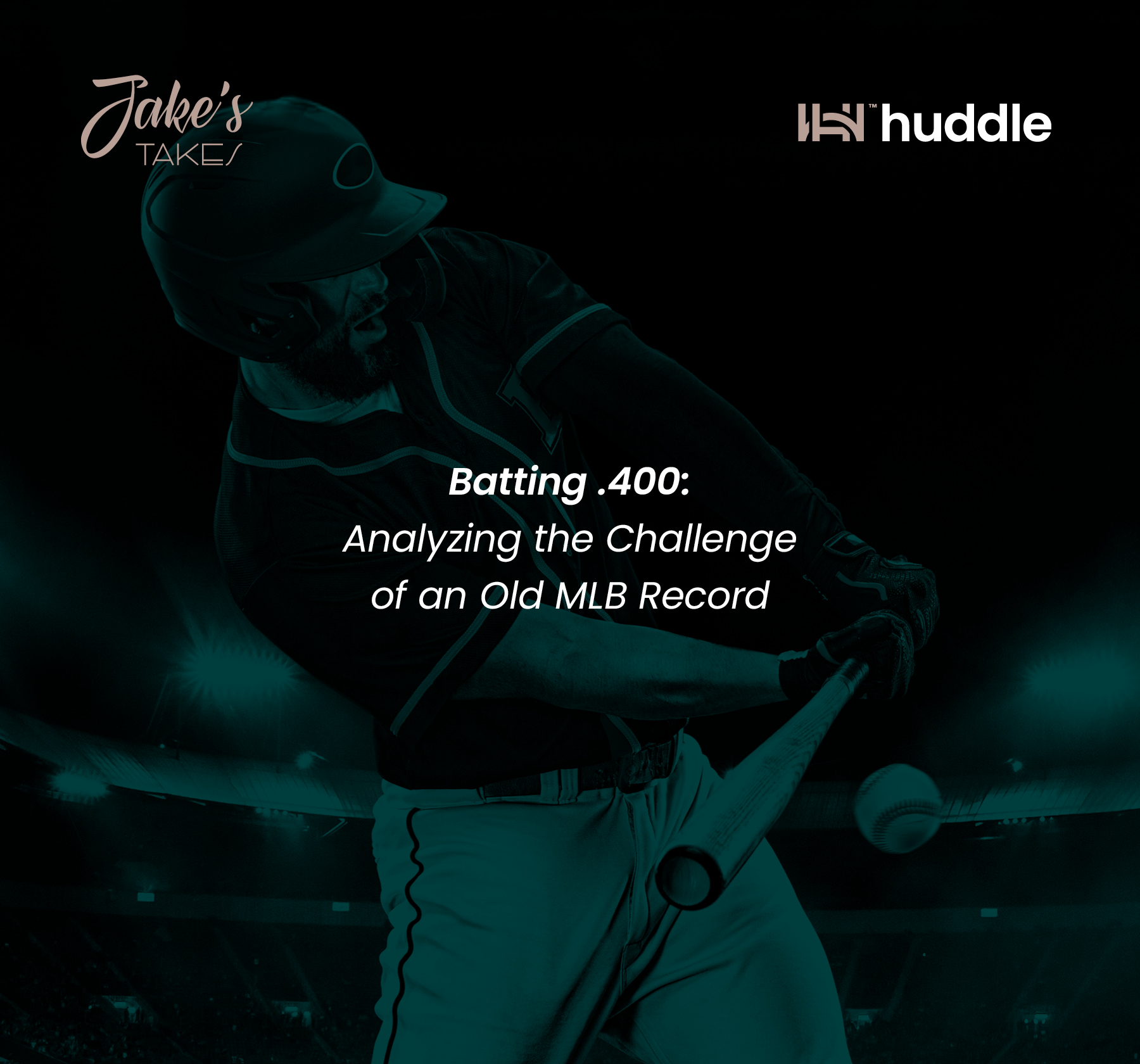
Jake’s Takes: NBA Player Props, Pricing Creation, and Playoff Analysis
Blog
Jake’s Takes: NBA Player Props, Pricing Creation, and Playoff Analysis
Latest Jake's Takes brings us Playoff recap and informative Q&A with Huddle trader Aaron Thompson. This Q&A session delves into the intricate process of creating pricing projections for NBA player props, particularly in the context of the playoffs. Aaron discusses the methodology behind setting these projections.
Before we dive into player props, let's briefly recap the games:
The Minnesota Timberwolves upset the defending champion Denver Nuggets in a wildly entertaining seven game series. As a result, the Timberwolves are into their first Western Conference Finals since 2004, when they lost a tightly contested five-game series to the Los Angeles Lakers. For those too young to remember, that series featured a gauntlet of Hall of Fame players on the Lakers (Kobe Bryant, Shaquille O’Neal, Karl Malone, Gary Payton), while the Timberwolevs were led in virtually every category by Kevin Garnett, who found help from Latrell Sprewell and Wally Szczerbiak.
The Dallas Mavericks, led by the best backcourt duo in the NBA in Luka Doncic and Kyrie Irving, upset the #1-seeded Oklahoma City Thunder in six games. But the Thunder also got outstanding performances from rookie Dereck Lively II (who reminds some of Tyson Chandler) and P.J. Washington, who was acquired at the trade deadline from the Charlotte Hornets. Both Washington and Lively figure to play important roles in Mavericks series against the Timberwolves, as the Wolves features an astounding seven players who 6’9” or taller.
In the Eastern Conference, the New York Knicks had their hearts broken after taking a 3-2 series lead before dropping their final two games to the Indiana Pacers. The Pacers and Knicks have a long and storied rivalry, and this series reflected that. The Knicks, who unfortunately finished the series with injuries to five players who all would have / did play massive roles, couldn’t get stops as the Pacers hit 67% of their shots from the field. The Pacers are currently down 2-0 to the Boston Celtics (more on them in a second) and star guard Tyrese Haliburton is nursing a hamstring injury.
At this point, the Boston Celtics have to be prohibitive favorites. The Celtics have made it to this round of the playoffs in three consecutive seasons and six of the past eight. They won 64 regular season games. They blitzed the Miami Heat in the first round and rapidly disposed of the upstart Cleveland Cavaliers in the second. With Tyrese Haliburton seemingly hurt and the Pacers down 2-0, I’m liking the Celtics odds now. Even with Kristaps Porzingis (who is made of glass right now) out with a right calf strain, the Celtics have routinely clobbered opponents with a mixture of shooting and defense. Why do I really like the Celtics? Beyond their star duo of Jayson Tatum and Jaylen Brown, they have the only backcourt that matchups up to the Dallas Mavericks right now. Jrue Holiday and Derrick White are lengthy, defensive menaces.
So… who do I like? I’m taking the Mavericks to get past the Timberwolves in a six-game, hard-fought series. And if Haliburton is truly out for the Pacers, I’m taking the Celtics in four.
Q&A with Huddle trader Aaron Thompson: Player Props Pricing Creation
Now that we’re all caught up, let’s chat player props, pricing projections (and their creation), and strategies for these games. For that, I spoke with Huddle Trader Aaron Thompson to learn a little more about what goes into the process.
Jake: So, let’s look at the big picture. How do you go about creating pricing projections for player props?
Aaron: We break out our projections for player props into two main categories - minutes and performance. We use a blend of domain knowledge and season averages in order to project the rotations that a team will use in the game when projecting minutes. For performance, we incorporate more in depth analytical approaches that account for matchups between a specific player and his opponent. We integrate all these factors into our projection models, constantly refining them based on the latest data and trends. Our goal is to create the most accurate and up-to-date projections possible.
Jake: Are there any unusual or perhaps unexpected factors that you take into account?
Aaron: When projecting player props, you always need to take into account injuries or injury risk. Some players will try to play through injuries and their performance will suffer because of it (finger injuries on a shooting hand). In summary, integrating injury analysis into player prop projections requires a nuanced understanding of how specific injuries affect player performance.
Jake: Could you explain the process of setting odds for the NBA playoffs (specifically for player props)? Are there any players right now that are receiving unique treatment?
Aaron: The process of setting odds during the playoffs changes quite a bit, mostly on the minutes side of the equation. Rotations tighten up and certain players might be played off the floor throughout a series. While minutes increase for starters, the Knicks this year were an extreme example of the increased minutes load players can receive. Another interesting example was Josh Giddey of the Thunder, the Mavericks second round matchup was a tough series for him and he went from starting to coming off the bench and playing 10-12 minutes.
Jake: Lastly, what strategies do you use to stay ahead of the market? How do you capitalize on pricing “discrepancies” for player props?
Aaron: The best way of staying ahead of the market is to keep an eye on injury news and what players/coaches are saying in press conferences. You can capitalize on pricing “discrepancies” for player props when you are certain you have information that isn’t being accounted for or when that information is being used incorrectly.
For instance, if a star player is playing through a minor injury that hasn’t been widely reported, their performance might suffer.
Additionally, it’s important to analyze team rotations and any changes in playing time. During the playoffs, rotations often tighten, and certain bench players might see increased or decreased minutes based on matchups. Understanding these nuances allows you to exploit inefficiencies in the prop market.















